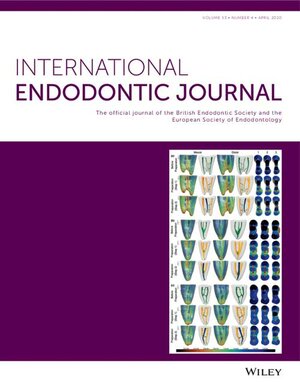Clinical strategies for successful palato-mesiobuccal canal management—Report of 2 cases
Abstract
Aim
To describe the management of the palato-mesiobuccal (PMB) canal in maxillary second molars with fused roots using conventional techniques.
Summary
Root canal treatment success hinges upon effectively addressing the intricate and variable anatomy of molar teeth. Failure to do so can lead to persistent infections and treatment failure. Recent advancements in imaging technologies have provided unparalleled insights into dental anatomy, especially in molars. Among these discoveries is the PMB canal, a unique anatomical variant recently reported for the first time in Endodontic literature. This canal, found in maxillary second molars with fused roots and originating from the coronal third of the palatal canal while traversing towards the mesiobuccal root presents challenges in clinical management due to its location. This article is the first to showcase the management of the PMB canal using conventional techniques. In the first case, a 38-year-old male patient presented with asymptomatic irreversible pulpitis in the maxillary second right molar. Following thorough instrumentation and irrigation, the presence of the PMB canal was discovered during root canal preparation. The canal was managed using rotary instruments and obturated successfully, resulting in a symptom-free tooth at an 8-year follow-up. The second case illustrates a similar scenario in a 23-year-old female patient presenting with symptomatic irreversible pulpitis in tooth 17. The PMB canal was identified during treatment and managed using rotary nickel-titanium instruments, leading to a favourable outcome at a 9-year follow-up.
Key learning points
- In fused roots of maxillary second molars, a PMB canal might be expected.
- Exploration of the buccal wall of the palatal canal under magnification after shaping procedures can reveal the PMB canal orifice in fused roots.
- Small tapers are suggested for the enlargement of the PMB canal.
- Continuous bleeding spots in the palatal canal might indicate a possible PMB canal orifice in vital cases.
- The use of an apex locator is suggested for the differential diagnosis of the PMB canal orifice from a perforation site.

 求助内容:
求助内容: 应助结果提醒方式:
应助结果提醒方式:


